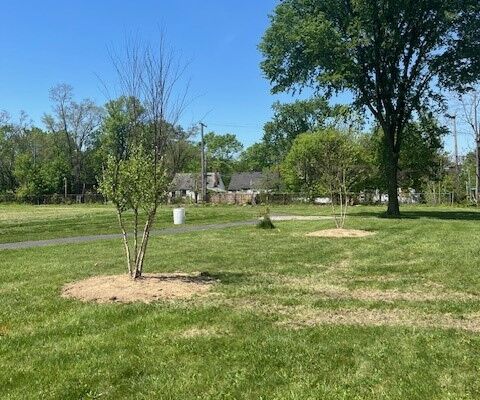How Do Trees Help the Environment?
Trees play a vital part in Project EverGreen delivering its mission to create a greener, healthier, cooler Earth.
Trees are incredibly valuable to the environment for multiple reasons including carbon sequestration,
air quality improvement and reducing the heat island effect
How do trees help the environment? Trees play a vital part in Project EverGreen delivering its mission to create a greener, healthier, cooler Earth. Trees are incredibly valuable to the environment for several reasons:
Carbon Sequestration – Trees sequester carbon by capturing CO₂ from the atmosphere and storing it in their biomass and the soil. This long-term storage helps to offset carbon emissions and is a critical component of strategies to combat climate change.
Air Quality Improvement – Trees absorb pollutants such as carbon dioxide (CO₂), sulfur dioxide (SO₂), and nitrogen oxides (NOx), while releasing oxygen through photosynthesis. This helps to improve air quality and mitigate the effects of pollution.

Trees play a vital part in Project EverGreen delivering its mission to create a greener, healthier, cooler Earth.
Climate Regulation – Trees play a crucial role in regulating the climate. They absorb CO₂, a major greenhouse gas, thus reducing the overall concentration in the atmosphere. This helps to mitigate the effects of climate change.
Improved Quality of Life – Trees and vegetation provide aesthetic value, habitat for many species, and can reduce noise.
Reduced Energy Use – Trees and vegetation that directly shade buildings decrease demand for air conditioning.
Reduce Heat Island Effect – In urban areas, trees provide shade, reduce the urban heat island effect, and improve the aesthetic and recreational value of spaces. They also help to reduce noise pollution and can have positive impacts on mental health and well-being.
Economic Value – Trees contribute to the economy through timber, fruit, and other forest products. They also have an indirect economic value by reducing energy costs (through shading and windbreaks), increasing property values, and supporting tourism and recreation industries.
Water Cycle Regulation – Trees are vital in maintaining the water cycle. They absorb and store large amounts of water, which they release back into the atmosphere through transpiration. This process helps to maintain local and global hydrological cycles, reducing the risk of floods and droughts.
Soil Conservation – The root systems of trees help to bind the soil, preventing erosion. This is particularly important in areas prone to erosion due to wind or water. Trees also enhance soil fertility through the decomposition of leaf litter, which adds organic matter to the soil.
Biodiversity Support – Trees provide habitats for a vast array of wildlife, including birds, insects, mammals, and other plants. They create microhabitats and food sources that support diverse ecosystems.
Overall, trees are essential for maintaining environmental health and sustainability. Their presence supports ecological balance, human well-being, and economic stability.
Project EverGreen’s Clean Air Calculator
It is easy to underestimate the power of green spaces that grow around us and, if we are lucky, surround the places where we call home, go to work, and enjoy our leisure time.
A new, online calculator will change the way we think about green spaces we often take for granted. Project EverGreen is the exclusive licensee of the Clean Air Calculator™ in the U.S.
The Clean Air Calculator, powered by Project EverGreen, is a web-based mapping tool that measures the positive environmental impact of plants—specifically lawns, trees, and shrubs on a property.
The calculator will be used by lawn and landscape professionals, park directors, golf course superintendents, commercial property owners, sports fields managers, homeowners, and others.
Plants not only capture carbon but also provide us with cleaner, cooler air. Lawns, trees, and shrubs make up green spaces but so do other plants like flowers and gardens. They attract people, wildlife, bees, insects, and microscopic organisms.
Underneath, soil helps grow and support green spaces with its own ecosystem of roots, earthworms, microbes, insects and even animals, like moles and gophers.
While all those things contribute to environmental health, our calculator uses three land covers—lawns, trees, and shrubs to measure the benefits of green space.
The calculator helps one visualize the environmental impact of land cover on a property by measuring four environmental health factors:
- Clean Air
- Carbon Sequestered
- People Impacted
- Km Offset
The Clean Air Calculator combines geographic information system (GIS)-based interactive maps with a scientific data model to identify the value of actual greenspace in cities, neighborhoods, communities, and individual properties.




